Diane didn’t know leukaemia was a blood cancer – “I thought it’s what little kids get”
In this honest, humourous, and heartfelt first-person narrative, Diane Autio shares her experiences of being diagnosed with acute myeloid leukaemia (AML).
It was just after extended celebrations to mark her 70th birthday, and she’d finally stopped work as a PA at Flinders University. At first, she was told, “you may have anaemia”, which became, “you may have leukaemia”, then “you’ve either got MDS or AML”. “I prayed it was MDS,” said Di, 72, of Victor Harbor (SA). After treatment, she went into remission, showing no detectable blasts, and had “six months of bliss”. Then, when her bone marrow began showing evidence of minimal residual disease, Di took up the opportunity to go on a clinical trial for venetoclax (Venclexta®).
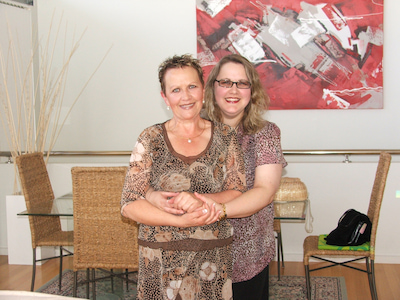
Words by Diane Autio
Apparently, I had it, leukaemia, or to be exact, acute myeloid leukaemia. I couldn’t even spell the word before I found myself with the illness!
Let me start from the beginning.
At the end of May 2019, I started a couple of wonderful weeks of 70th birthday celebrations with fabulous people. I was happy, fit, healthy (or so I thought) energetic, and enthusiastic… mainly about life.
At that time, I had decided that the next 10 years would probably be as good as they would get, given that many ailments seem to begin from around 80. So, this next decade for me was going to be the absolute best.
I had recently retired and shared my home with a beautiful five-year-old, 35kg Groodle, Oliver, and we were having a pretty good life. We had a general understanding as to who was the boss and, occasionally, I thought it may be me, but I was usually wrong. I have the best neighbours and, having lived in many streets, in many countries during my life, this current one is the best. My close friends are also at the top of the list.
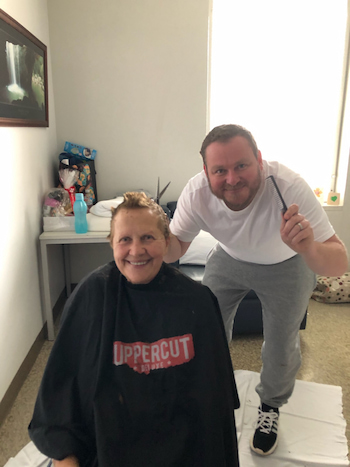
As well as being marginally more tired than usual, I noticed my gums were a little tender and would bleed slightly when I brushed my teeth. I decided, because the gum issue was not in any localised position, it probably wasn’t a dental issue. (Note: now I am apparently a dentist!)
I did what most people in the world seem to do, and Dr Googled information on the gum issue, and spent a week swishing with salt water. I decided my dental career was about to come to an end when I made an appointment to see my GP.
He ordered bloods to exclude, what he said, “may be anaemia”. I could handle that. Anaemia… not a huge problem. A bit inconvenient maybe but better than having something wrong with my gums which may have led to losing teeth, just the thought was abhorrent to me.
The next day I had some blood taken, and the following day my GP said he needed me to go quite urgently to have some more blood taken. This was now Thursday.
On Friday, he told me I had an appointment for Tuesday with a haematologist consultant at Flinders Medical Centre (FMC), followed by a bone marrow biopsy the following day.
This was not the news I was wanting to hear! I asked my GP what he thought might be the problem, and apparently the simple earlier words of, “I want to exclude anaemia”, were replaced with, “you may have, and I repeat may, have leukaemia”.
No, I like the idea of anaemia better! At this point I should say that I have always been grateful that my GP got onto my problem very quickly.
My daughter, Daisy, and I immediately Dr Googled everything we could about leukaemia. Our investigations revealed that there were several different types of leukaemia ranging from the type where you will probably live into your 90s, to the aggressive one, which does not make exhilarating reading.
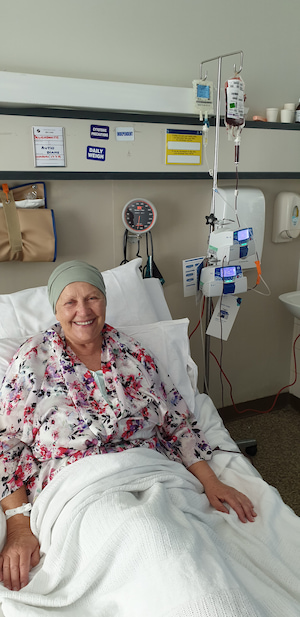
The weekend was spent in a bit of a blur with terribly mixed feelings. Daisy returned home and I started packing for a couple of days at her house.
“At that stage I obviously did not know that I would not be returning home to sleep in my own bed for at least five months!”
We went to the cancer centre at FMC and met with the pleasant haematology consultant who indicated that I had either one of two illnesses. The first one was myelodysplastic syndrome (MDS), and the second possibility was acute myeloid leukaemia (AML).
During our frenetic Dr Googling on the weekend, we had researched that one of the most aggressive forms of leukaemia was AML. I was pretty sure I did not have that. I was too healthy to have that!
The following day, Daisy and I went into the day surgery unit to sit in the waiting room with other assorted sad souls, to wait to be processed for my bone marrow biopsy.
I was quite spooked by this procedure because everything I had read about it indicated that I would be given a local anaesthetic and would only occasionally feel the 10-foot-long spear-type needle being thrust through my hip and pelvis as it pierced the bone, scraped some bone and marrow and then was withdrawn again.
I was, however, quite euphoric when, whilst waiting in the ‘holding bay’ to go into the operating theatre, I was visited by a very pleasant anaesthetist who explained that he would be administering a very strong sedative and it was highly unlikely that I would remember anything about the procedure. I really liked the sound of that! The procedure was exactly as he had intimated. To date, I have had 12 bone marrow biopsies.
I went from theatre recovery into the ‘eat sandwiches and drink gallons of water’ area whilst they watched to see if I was going to be a problem. Whilst reclining in the bed, I strained my eyes to read a poster on the opposite wall which I thought read “tell us if you are wormed”. I thought this was a very strange thing to have to tell the nurses. It was only after a much more intense straining of my eyesight I read that the actual wording was “tell us if you are worried”. A real Spec-Saver moment!
Daisy collected me from day surgery, and we stopped to do some shopping on the way home, collecting ice creams as a reward for being brave.
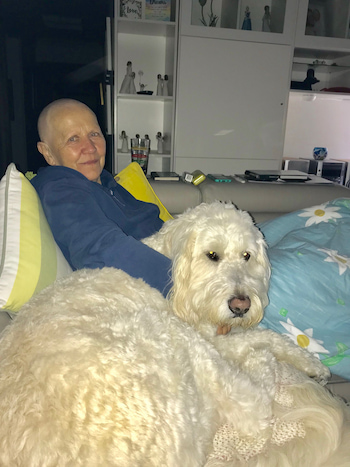
No sooner had we driven into her garage, and, in fact, I wasn’t even out of the car when she received a call from FMC telling her to bring me straight back in, to be admitted.
Apparently early indications were that my immunity was dangerously low, and I needed to be brought into a “safe environment”. During the same conversation, Daisy was told that I had AML.
Off we went to FMC again and I was admitted straight to Ward 5G which is the Haematology/Oncology Ward and is referred to as one of the “home wards”, with good reason.
The staff are amazing. Over the next few months, I met and was looked after by most of them, and Daisy joked that each time I was readmitted, it took an hour to get to my room because each step was peppered with squeals and hugs from the nurses and auxiliary staff, as if we were lifelong friends. The staff in this very busy ward definitely made my journey very bearable.
I spent the first few days having various tests and examinations, e.g. heart, lungs, kidneys, etc., plus having a picc line inserted (an absolute treasure). During my initial admittance, I was automatically given a single room which was lovely. The encouragement I received from the nursing staff and various doctors was invaluable.
My next treatment was the main chemotherapy, administered by IV for 24 hours non-stop, for seven days, to target my FLT3 mutation.
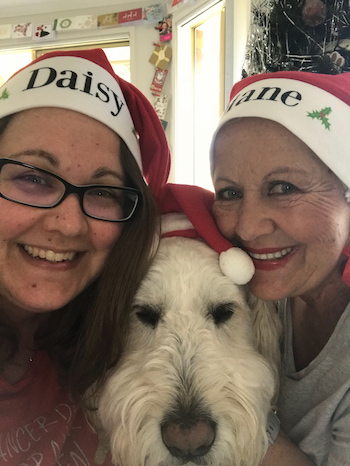
For exercise, I dragged my chemo stand around the ward as daintily as I could. Before my hair started to fall out, my dear hairdresser friend cut it very short and then when it began falling out, the beautiful nurses shaved it all off, to save me the trauma of pulling out handfuls. Thinking back to that time, whilst knowing my entire body was hairless, there was still that one chin hair which refused to budge! Even chemo didn’t frighten it away!
As for the other side effects, well they were short-lived. I think you learn to deal with them knowing that it’s all happening to make you better in the long run.
The winter came and went.
When my immunity levels had risen, I was able to finally go home, which on this occasion was to Daisy’s, because I lived some 80km from the hospital.
I had been a patient in Ward 5G for nearly five weeks. I spent three weeks at her house doing very little, as one of the side effects was fatigue, but continuing to take the daily midostaurin (Rydapt®) plus a myriad of other tablets (I needed a tablet timetable) until it was time to go back to Ward 5G for my first consolidation chemo which would take a week. I did this three times.
During my three weeks “off” I visited the cancer clinic twice a week to have blood taken and my picc line cleaned. I also had many blood transfusions and platelet transfusions. I am very grateful to the anonymous blood donors who made that possible for me.
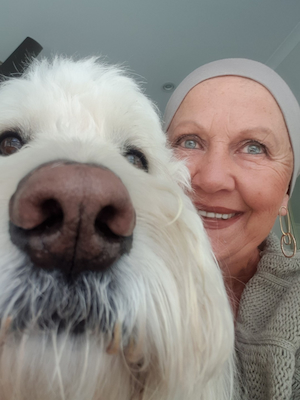
During one of the transfusions, my temperature surprisingly spiked quickly so I was whisked off to be admitted for a week of antibiotics. Another week of antibiotics happened when I was having a regular transfusion and had a terrible cold which also sent my temperature upwards. They take no chances.
“About five weeks after my treatment started, I was in remission. A euphoric moment.”
In November all my hospital treatments had finished, and I was allowed to go back to my home. My wonderful neighbours had looked after my house, and I was very happy to be home.
I continued to take the midostaurin for 12 months, which was not without its side effects, but I gradually learned how to take it to minimise these effects.
I had my picc line removed in February last year (2020) and continue to have fortnightly blood tests, which briefly changed to monthly, and quarterly bone marrow biopsies. I have put on the 13kg of weight which I lost whilst having treatment, but that’s because the shops continue to sell chocolate and ice cream!
I was sorry that there was nobody in the ward during my time there who had AML, who I could talk to about it, and for that reason I would be very happy to offer advice and positivity to anybody newly diagnosed and finding themselves confused by their diagnosis.
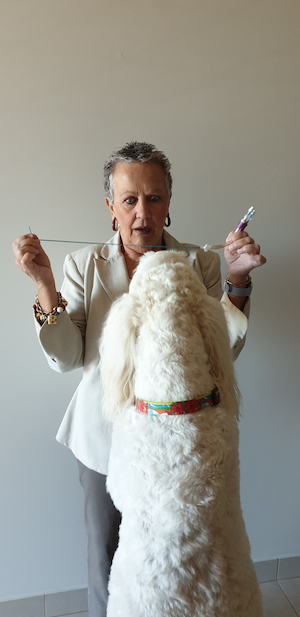
When I have been with friends, my illness obviously comes up and I have made it clear that I am happy to talk them into a coma, answer any questions, or not talk about it if that’s their wish, but the one thing I don’t want is for people to tip toe around me like walking on eggshells.
I can even joke about it. Joking about it is not going to change the prognosis and at least we get to laugh.
Sometimes, usually in the early hours of the morning, I would google the AML life expectancy statistics and would always initially become anxious after reading what I already knew, then I turned it around and thought, “why can’t I be one of those statistics who does not die within five years! That’s how I get through each day. Believing I may be one of those ‘good’ stats, I have had two Christmases and two birthdays since my insidious diagnosis and each occasion is a milestone and I am very, very grateful.
So, fast-forward six months from when I first started writing this. I had several months of no detectable minimal residual disease and even started to make silent plans for a much longer-term future. Unfortunately, a March (quarterly) bone marrow biopsy detected a slight rise in MRD levels, so my consultant brought forward the next BMB to confirm the rise. The results confirmed it.
I can’t say, “it came back”, because it actually never left, and I have been through some emotional and silent turmoil since learning of the detectable levels, even asking myself “is this it then?”
I decided that it would not be the end or anywhere near it and was comforted to learn from my consultant that there was a clinical trial for me to go on, as long as I met the criteria. I did meet the criteria (which is bittersweet) and will commence the venetoclax trial this week, together with 10 days of sub-cutaneous low-dose chemo (on a 28-day cycle) as an outpatient.
I don’t know what’s in store for me, but I do know that the clock is ticking a little faster, and I truly do enjoy each day I have.
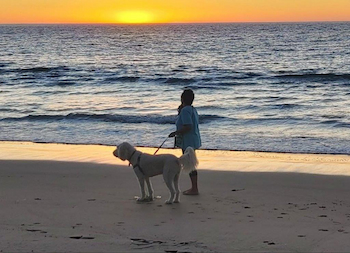
I have seen the absolute best in people (and sadly the not so good), and I enjoy simple things like taking my dog down to the beach, but there are so many more things to make plans for.
I especially feel so grateful to have such a wonderful daughter and feel sad that her life has been turned upside down because of my illness, but she never complains, she is always positive for me.
I have never once thought “why me?” Why anybody, in fact. I do think I drew the short straw on this occasion but to be fair, I haven’t drawn the short straw much in my pretty wonderful life.
As my dog, Ollie, looks at me adoringly and intensely (which usually means “feed me”), his eyes say, “we’ve got this Mum”, and indeed we have… for now.
Last updated on February 22nd, 2022
Developed by the Leukaemia Foundation in consultation with people living with a blood cancer, Leukaemia Foundation support staff, haematology nursing staff and/or Australian clinical haematologists. This content is provided for information purposes only and we urge you to always seek advice from a registered health care professional for diagnosis, treatment and answers to your medical questions, including the suitability of a particular therapy, service, product or treatment in your circumstances. The Leukaemia Foundation shall not bear any liability for any person relying on the materials contained on this website.